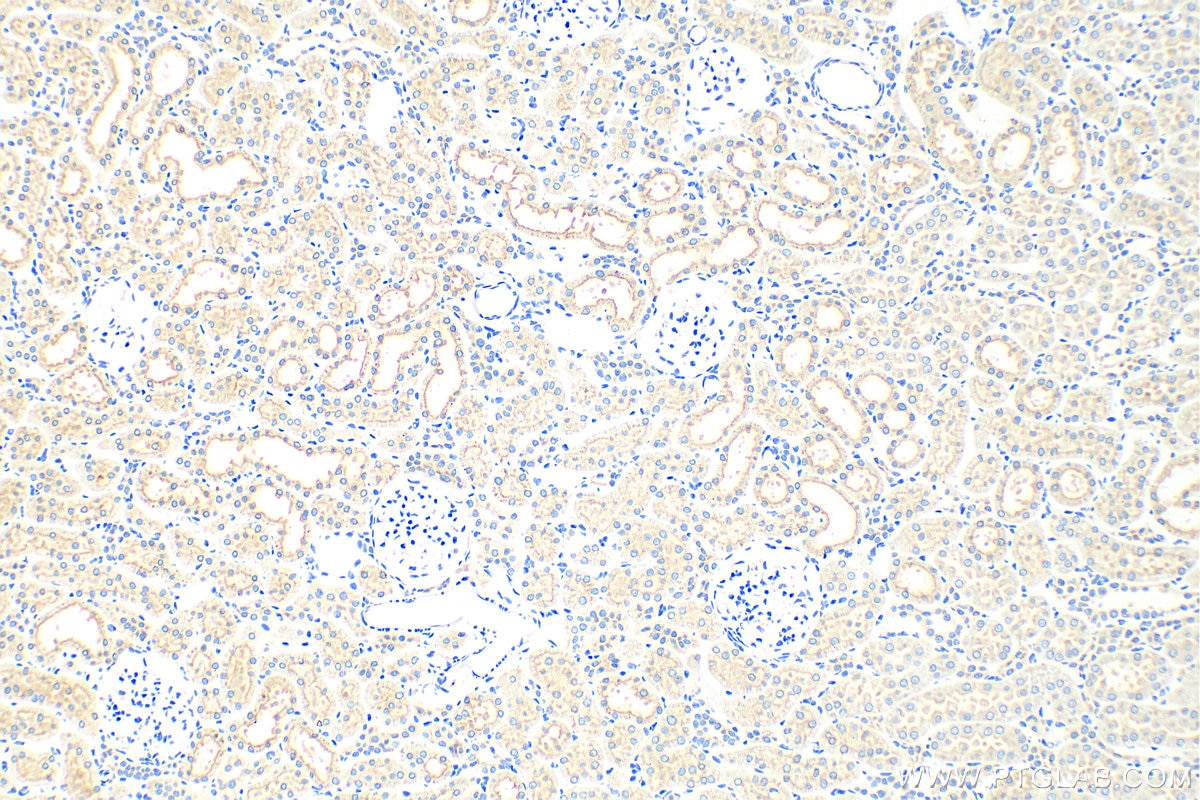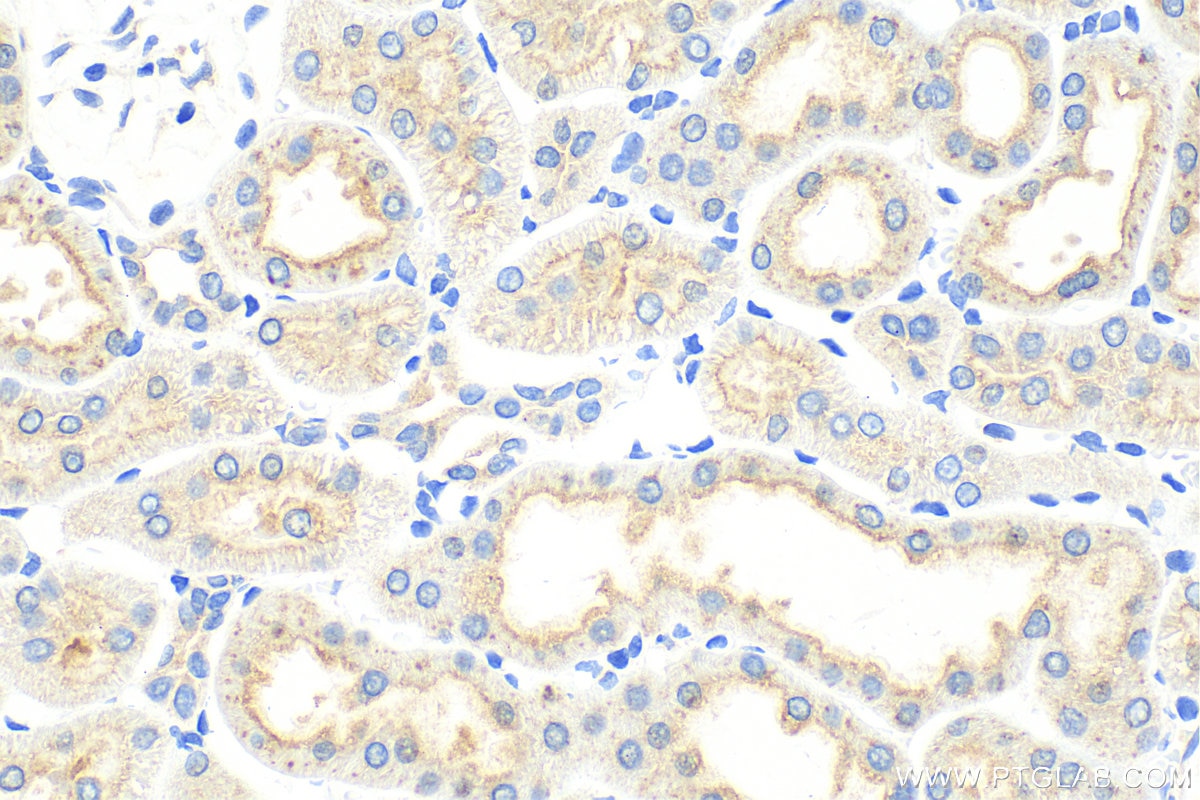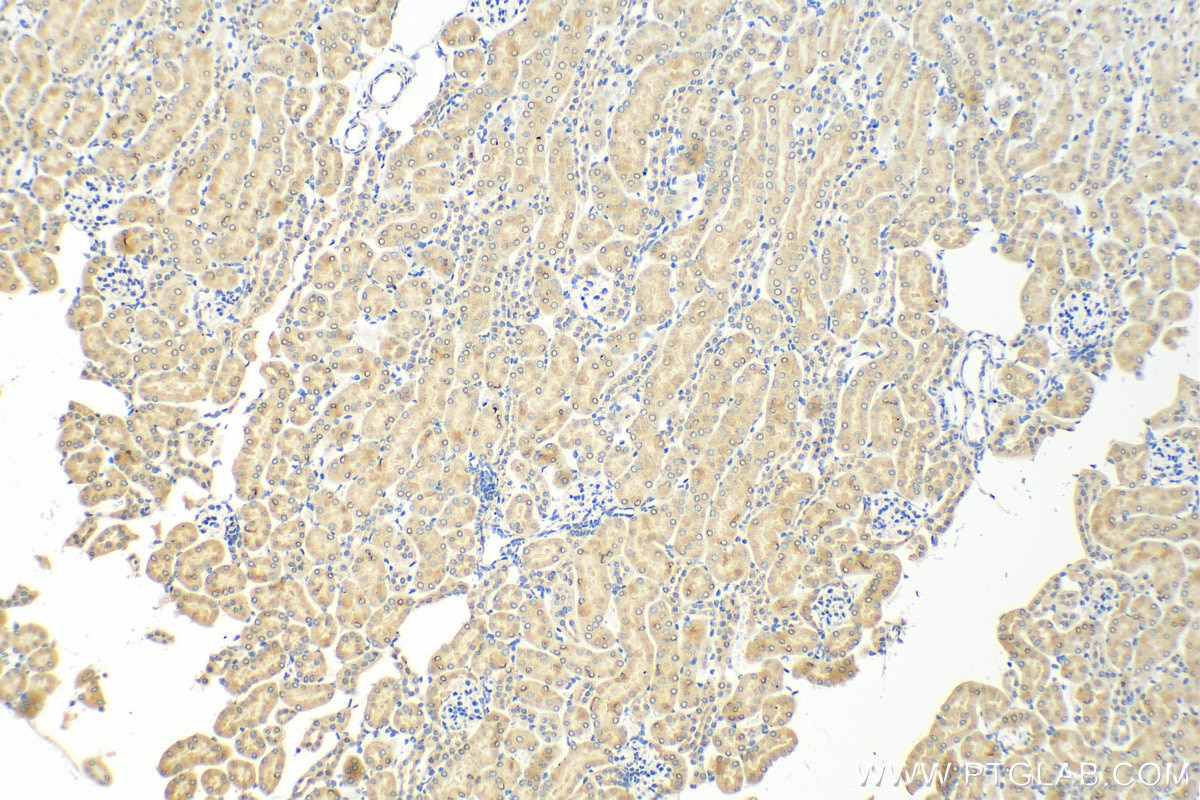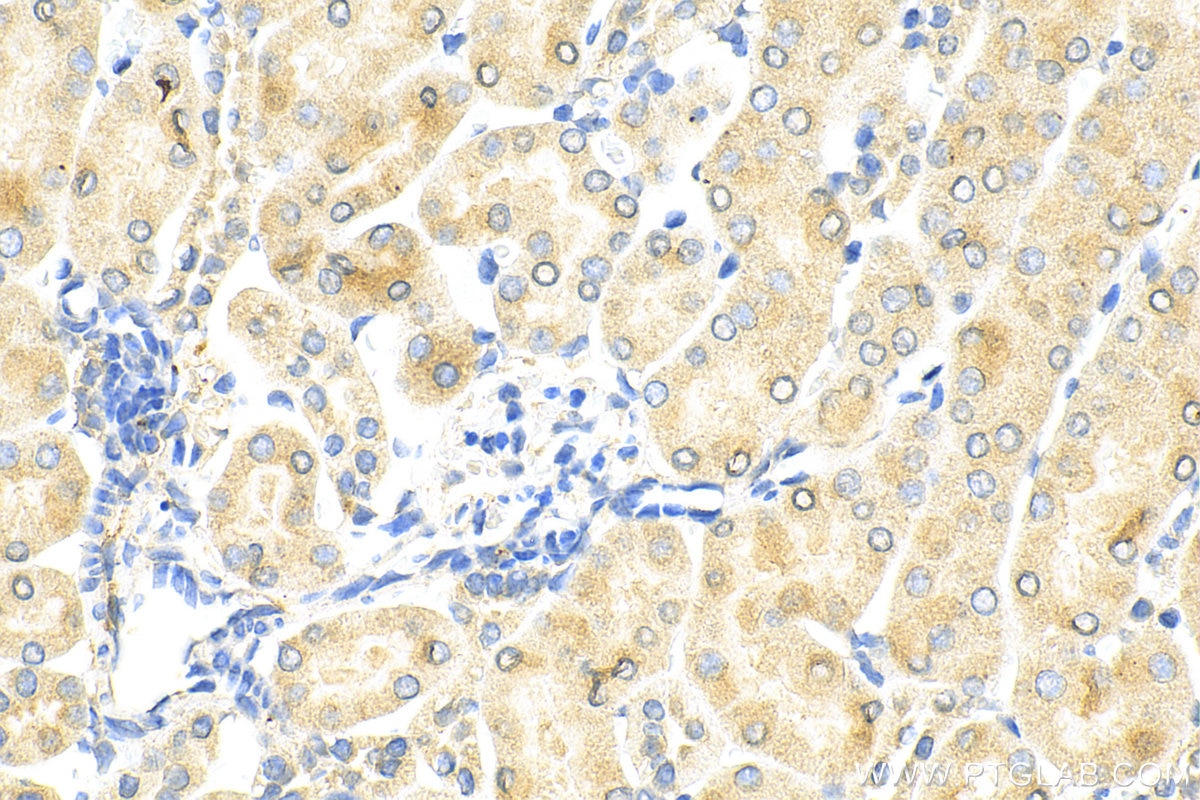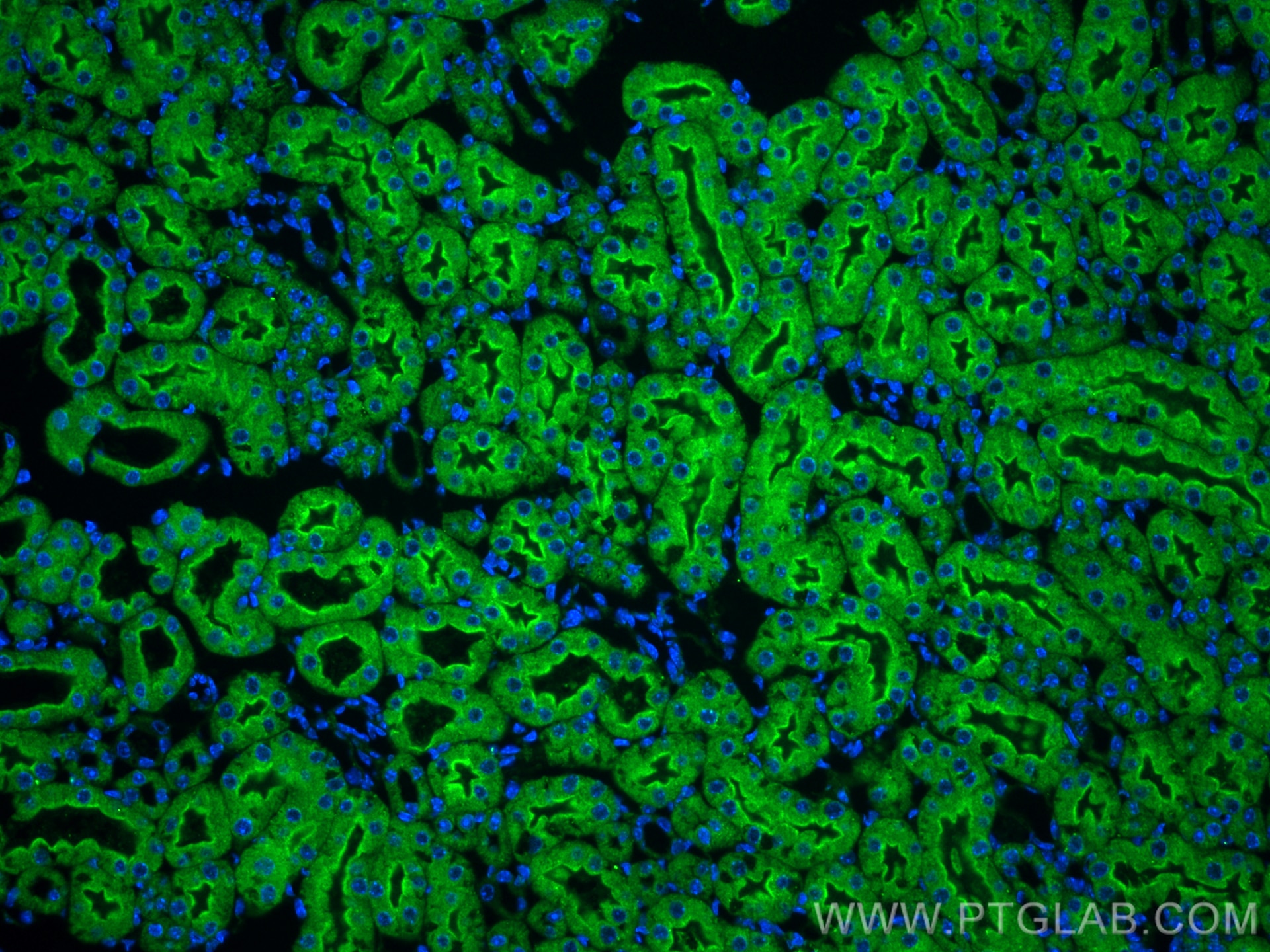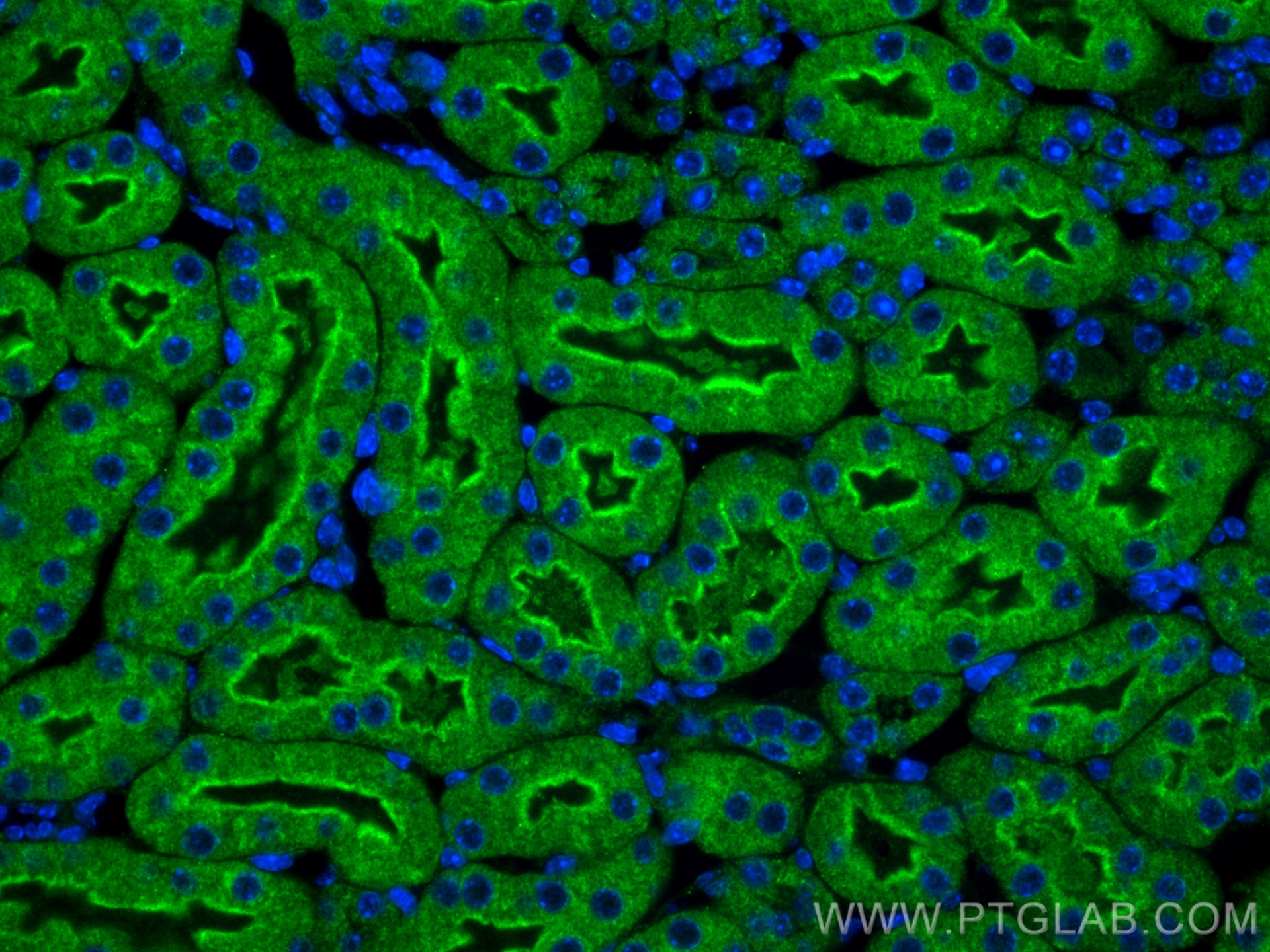Anticorps Polyclonal de lapin anti-KIM-1/HAVCR1
KIM-1/HAVCR1 Polyclonal Antibody for WB, IHC, IF-P, ELISA
Hôte / Isotype
Lapin / IgG
Réactivité testée
rat, souris
Applications
WB, IHC, IF-P, ELISA
Conjugaison
Non conjugué
N° de cat : 30948-1-AP
Synonymes
Galerie de données de validation
Applications testées
| Résultats positifs en WB | tissu rénal de souris, |
| Résultats positifs en IHC | tissu rénal de rat, tissu rénal de souris il est suggéré de démasquer l'antigène avec un tampon de TE buffer pH 9.0; (*) À défaut, 'le démasquage de l'antigène peut être 'effectué avec un tampon citrate pH 6,0. |
| Résultats positifs en IF-P | tissu rénal de souris, |
Dilution recommandée
| Application | Dilution |
|---|---|
| Western Blot (WB) | WB : 1:500-1:2000 |
| Immunohistochimie (IHC) | IHC : 1:200-1:800 |
| Immunofluorescence (IF)-P | IF-P : 1:50-1:500 |
| It is recommended that this reagent should be titrated in each testing system to obtain optimal results. | |
| Sample-dependent, check data in validation data gallery | |
Applications publiées
| WB | See 7 publications below |
| IHC | See 6 publications below |
| IF | See 3 publications below |
Informations sur le produit
30948-1-AP cible KIM-1/HAVCR1 dans les applications de WB, IHC, IF-P, ELISA et montre une réactivité avec des échantillons rat, souris
| Réactivité | rat, souris |
| Réactivité citée | rat, souris |
| Hôte / Isotype | Lapin / IgG |
| Clonalité | Polyclonal |
| Type | Anticorps |
| Immunogène | Protéine recombinante |
| Nom complet | hepatitis A virus cellular receptor 1 |
| Masse moléculaire calculée | 34 kDa |
| Poids moléculaire observé | 72 kDa |
| Numéro d’acquisition GenBank | NM_173149.2 |
| Symbole du gène | Havcr1 |
| Identification du gène (NCBI) | 286934 |
| Conjugaison | Non conjugué |
| Forme | Liquide |
| Méthode de purification | Purification par affinité contre l'antigène |
| Tampon de stockage | PBS with 0.02% sodium azide and 50% glycerol |
| Conditions de stockage | Stocker à -20°C. Stable pendant un an après l'expédition. L'aliquotage n'est pas nécessaire pour le stockage à -20oC Les 20ul contiennent 0,1% de BSA. |
Informations générales
Kidney injury molecule 1 (KIM-1), also known as Hepatitis A virus cellular receptor 1 (HAVCR1), CD365, or T-cell immunoglobulin and mucin domain 1 (TIM-1), is a class I integral membrane glycoprotein, with an ectodomain containing Ig-like domain and a mucin domain. KIM-1 acts as a membrane receptor for hepatitis A virus (HAV) (PMID: 9658108; 8861957). KIM-1 provides a costimulatory signal for T cell activation and inhibits the development of peripheral tolerance (PMID: 16284246; 15793575). KIM-1 may be involved in the regulation of asthma and allergic diseases (PMID: 14534576). It has been reported that KIM-1 is shed into urine after acute kidney damage and is a marker of renal tubular injury (PMID: 14600030).
Protocole
| Product Specific Protocols | |
|---|---|
| WB protocol for KIM-1/HAVCR1 antibody 30948-1-AP | Download protocol |
| IHC protocol for KIM-1/HAVCR1 antibody 30948-1-AP | Download protocol |
| IF protocol for KIM-1/HAVCR1 antibody 30948-1-AP | Download protocol |
| Standard Protocols | |
|---|---|
| Click here to view our Standard Protocols |
Publications
| Species | Application | Title |
|---|---|---|
Redox Biol Protective role of vitamin D receptor against mitochondrial calcium overload from PM2.5-Induced injury in renal tubular cells | ||
Sci Total Environ Exploring potential targets and mechanisms of renal tissue damage caused by N-(1,3-dimethylbutyl)-N'-phenyl-p-phenylenediamine quinone (6-PPDQ) through network toxicology and animal experiments: A case of chronic kidney disease | ||
Int Immunopharmacol Identification of potential targets regulating neutrophil extracellular traps in acute rejection of kidney transplantation based on transcriptomics and animal experiments | ||
Int Immunopharmacol Wogonoside ameliorates oxidative damage in tubular epithelial cells of diabetic nephropathy by modulating the HNF4A-NRF2 axis | ||
Ecotoxicol Environ Saf A network toxicology and machine learning approach to investigate the mechanism of kidney injury from melamine and cyanuric acid co-exposure | ||
Sci Rep Identifying novel aging-related diagnostic and prognostic models and aging-targeted drugs for sepsis patients |

